-
1 of 253523 objects
Vita et Fabulae, Lib. I-IV [English] Tr: William Caxton 26 March 1484
30.8 x 22.2 x 2.8 cm (book measurement (conservation)) | RCIN 1057911
![Vita et Fabulae, Lib. I-IV [English] / translated by William Caxton Vita et Fabulae, Lib. I-IV [English] / translated by William Caxton](https://col.rct.uk/sites/default/files/styles/rctr-scale-1300-500/public/collection-online/e/f/623296-1470746648.jpg?itok=Foo9WY45)
Aesop (c. 620-564 BC)
Vita et Fabulae, Lib. I-IV [English] / translated by William Caxton 26 March 1484
![Vita et Fabulae, Lib. I-IV [English] / translated by William Caxton Vita et Fabulae, Lib. I-IV [English] / translated by William Caxton](https://col.rct.uk/sites/default/files/styles/rctr-scale-1300-500/public/collection-online/0/e/623298-1470746687.jpg?itok=kjZSlz7h)
Aesop (c. 620-564 BC)
Vita et Fabulae, Lib. I-IV [English] / translated by William Caxton 26 March 1484
![Vita et Fabulae, Lib. I-IV [English] / translated by William Caxton Vita et Fabulae, Lib. I-IV [English] / translated by William Caxton](https://col.rct.uk/sites/default/files/styles/rctr-scale-1300-500/public/collection-online/e/4/623299-1470746728.jpg?itok=-f8gFN4M)
Aesop (c. 620-564 BC)
Vita et Fabulae, Lib. I-IV [English] / translated by William Caxton 26 March 1484
![Vita et Fabulae, Lib. I-IV [English] / translated by William Caxton Vita et Fabulae, Lib. I-IV [English] / translated by William Caxton](https://col.rct.uk/sites/default/files/styles/rctr-scale-1300-500/public/collection-online/8/c/253602-1470734378.jpg?itok=I4Z5_qHQ)
Aesop (c. 620-564 BC)
Vita et Fabulae, Lib. I-IV [English] / translated by William Caxton 26 March 1484
![Vita et Fabulae, Lib. I-IV [English] / translated by William Caxton Vita et Fabulae, Lib. I-IV [English] / translated by William Caxton](https://col.rct.uk/sites/default/files/styles/rctr-scale-1300-500/public/collection-online/6/b/253603-1470734391.jpg?itok=w_hiNB9s)
Aesop (c. 620-564 BC)
Vita et Fabulae, Lib. I-IV [English] / translated by William Caxton 26 March 1484
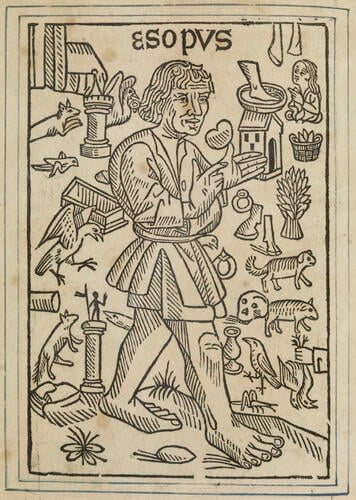
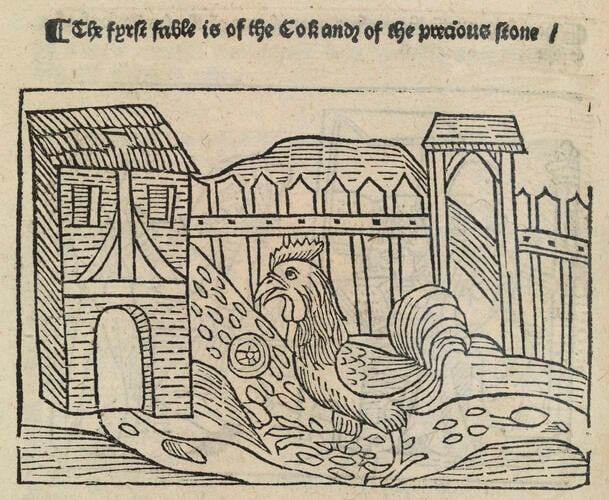
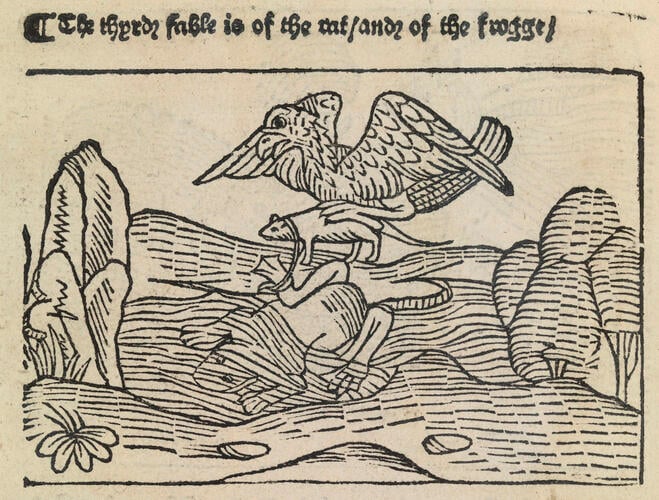
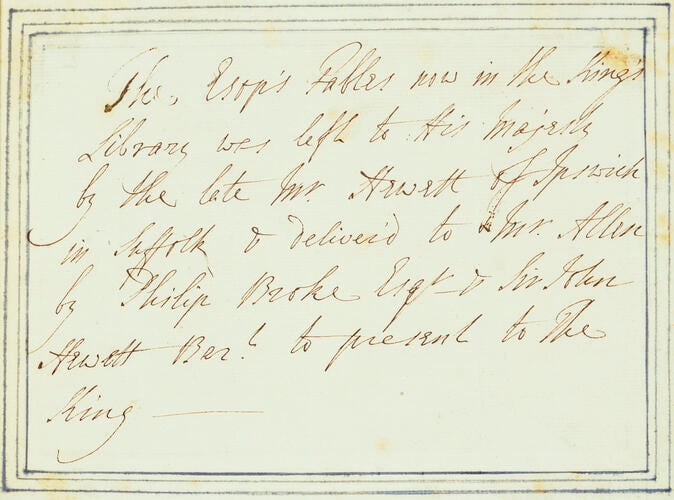
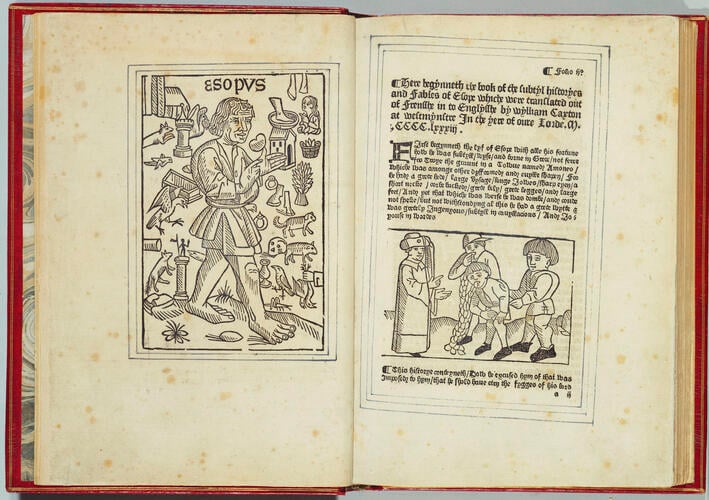
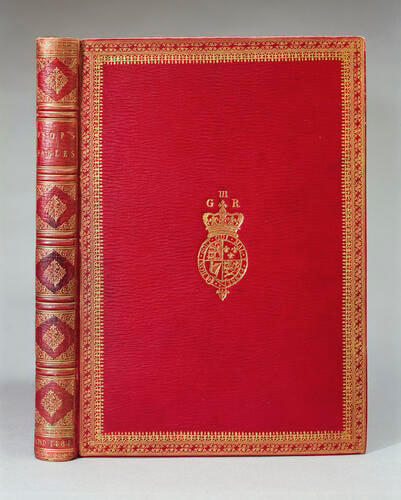
-
The Fables are an ancient Greek collection of moral stories told by animals, believed to have been authored by the storyteller Aesop. Despite being the first of their kind, they were profoundly influential in western literature: not only did the Fables circulate uninterruptedly from Antiquity to Modernity, but current definitions of ‘fable’ are still based on Aesop’s work. As their purpose is to educate the audience, the stories revolve around situations that exemplify practical moral teachings. While the narratives are simple, they present metaphors and transformations that realistically portray everyday life and emotions.
The Fables’ popularity ensured that they were among the first texts to be printed. This edition is the first one in English translation, and also provides a short biography of Aesop. Its printer, William Caxton, translated the text himself, although not from the original Greek but from the Latin translation by the Italian scholar Rinuccio d’Arezzo, completed only a few decades prior in 1448. It was one of Caxton’s first productions with a large quantity of woodcuts and illustrations.
As its first printer, Caxton is an important figure in the cultural history of England. He established his printing press in Westminster in 1476, after learning how to use this new technology on the continent. In origin, Caxton had established himself in business and served as governor to the Merchant Adventurers of London, which traded in textiles to Europe. For a time, he settled in Bruges, when he also entered the service of Margaret of York, Duchess of Burgundy -- sister to kings Edward IV and Richard III of England. It was while serving the Duchess that Caxton travelled to Cologne where he observed the products of the printing press.
A facsimile edition of the Royal Library copy was published by the Scolar Press in 1976.
Binding description
Eighteenth-century straw-grained red goatskin. Laced-on boards; covers decorated with gilt tools, 3-tier roll borders, and pre-1801 Hanoverian Royal Arms as centrepiece, with crown and George III’s monogram above. Spine decorated with lozenges and corner-pieces. Gilt edges.Provenance
Presented to George III from the collection of Thomas Hewett (d.1773), Rector of Bucklesham near Ipswich. Hewett had created a parochial library of about 190 books, now divided between Woodbridge and Ipswich. Hewett's will does not specifically bequeath this book to the King, but it is possible that such a decision was made by his relatives (one of whom, Philip Broke of Nacton in Suffolk, is mentioned in the will and in the inscription presenting the book to the King).
-
Creator(s)
(translator)(translator)Acquirer(s)
-
Measurements
30.8 x 22.2 x 2.8 cm (book measurement (conservation))
30.5 x 3.0 cm (book measurement (inventory))
Category
Other number(s)
ISTC : Incunabula Short Title Catalogue – ISTC ia00117500ESTC : English Short Title Catalogue Citation Number – ESTC S111230Alternative title(s)
Vita et Fabulae, Lib. I-IV [English] / translated by William Caxton.
Vita, after Rinucius, et Fabulae, Lib. I-IV, prose version of Romulus [English]. Tr: William Caxton. Add: Fabulae extravagantes. Fabulae novae Fabulae Aviani. Fabulae collectae [English] Tr: William Caxton
Place of Production
City of Westminster [London]